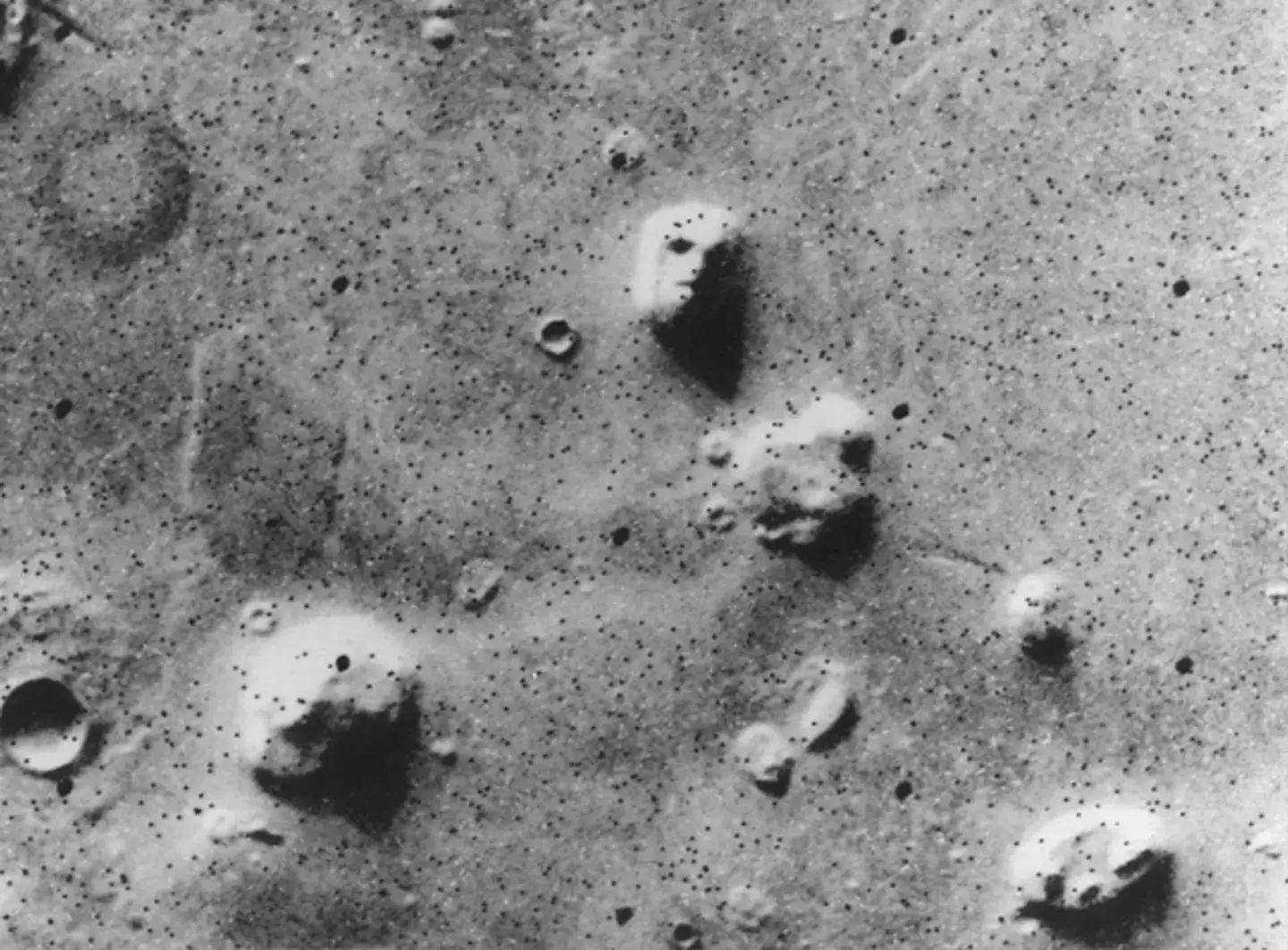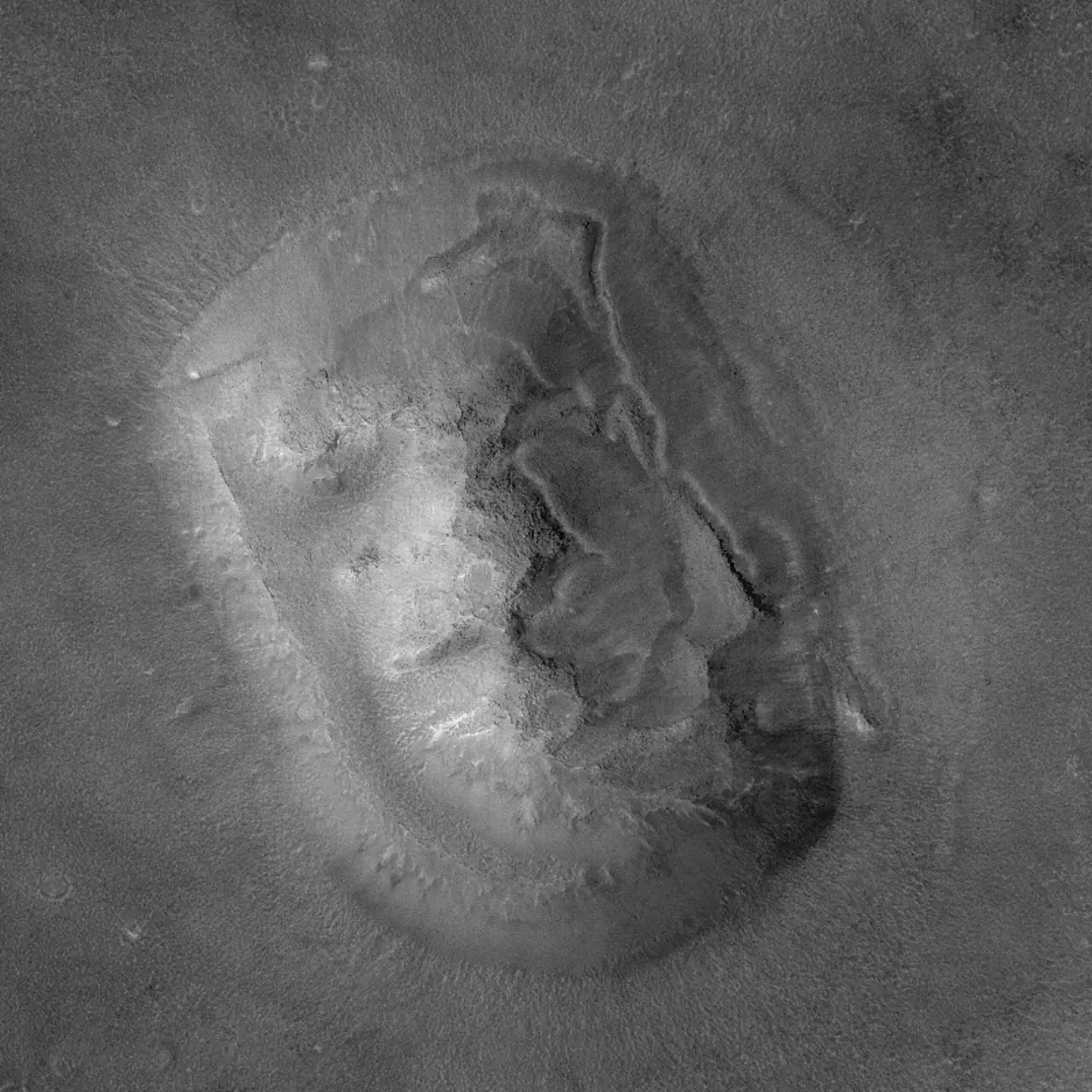Viking I took the picture of the surface of Mars, later released by NASA
The first spacecraft to land on Mars captured a chilling photo which some believe is proof that life really existed on the Red Planet.
The thought of lifeforms on another planet is, quite frankly, terrifying.
Back in 1976, NASA’s Viking 1 spacecraft was taking photos of Mars to find a possible landing site for sister ship Viking 2.
The Viking 1 lander took the first-ever photograph from the surface of Mars on July 20 of that same year.
Five days later, it captured the ‘Face of Mars’ which NASA describes as a ‘shadowy likeness of a human face’.
Take a look for yourself below.

The ‘Face of Mars’ captured by Viking 1 in July 1976 (NASA)
Pretty creepy, isn’t it?
The ‘enormous head’ was almost two miles from end to end and seemed to be staring back at the cameras from a region of the Red Planet called Cydonia, NASA’s website explains.
Shadows in the photo over the huge rock formation gave the illusion of an eye, nose and mouth. Space fans were in awe when the photo was released days later.
NASA had hoped that the picture would be ‘a good way to engage the public and attract attention to Mars’.
The company explained: “Some people think the Face is bona fide evidence of life on Mars – evidence that NASA would rather hide, say conspiracy theorists. Meanwhile, defenders of the NASA budget wish there was an ancient civilization on Mars.”
.jpg)
Viking I captured the first photos of the surface of Mars in 1976 (Bettmann/Getty Images)
Like most things in life, the reality behind the face is somewhat disappointing.
NASA’s website explains: “The speckled appearance of the image is due to missing data, called bit errors, caused by problems in transmission of the photographic data from Mars to Earth. Bit errors comprise part of one of the ‘eyes’ and ‘nostrils’ on the eroded rock that resembles a human face near the center of the image.”
The rocky formation itself is the Martian equivalent of a butte or a mesa – common landforms around the West of America.
Some years later, on April 5, 1998, Mars Global Surveyor flew over Cydonia for the first time and snapped another photo in the same area as the Face.
And on April 8, 2001, the Mars Global Surveyor returned for a second look. Using ‘absolute maximum resolution,’ the camera captured an even sharper view of the butte.

The Cydonia photo taken in 2001 (NASA)
Each pixel in the 2001 image spans 1.56 meters, compared to 43 meters per pixel in the best 1976 Viking photo.
Unfortunately, there was not a face in sight – as you can see in the photo above.
While there might not be a giant rocky face staring at us down from Mars, who’s to say other lifeforms aren’t watching over us right now? We might find out one day!





